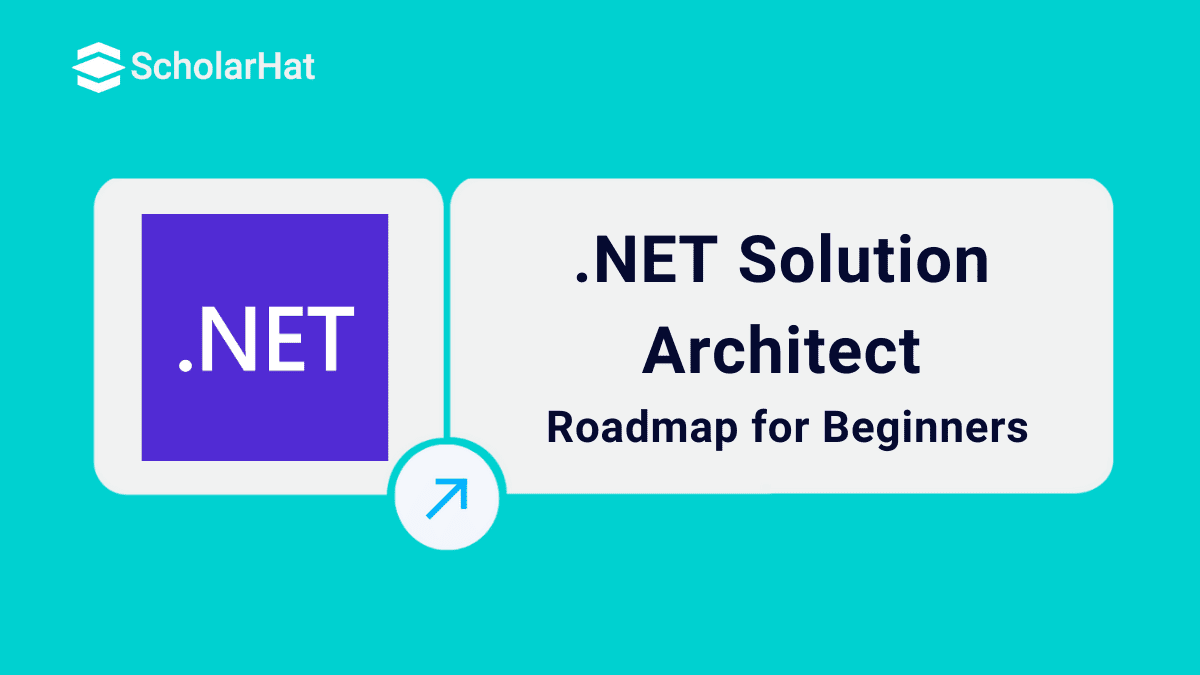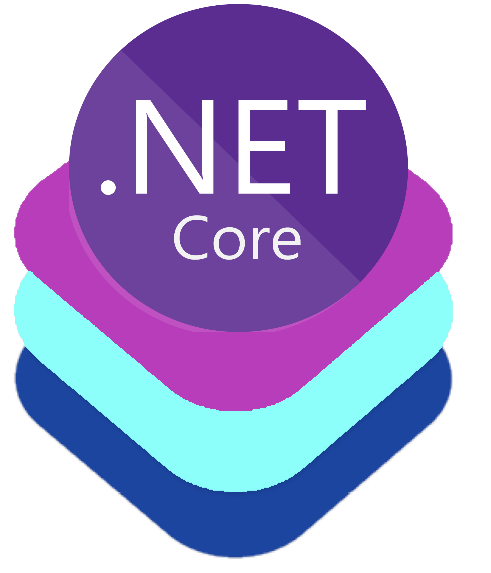29
Dec.NET Solution Architect Roadmap for Beginners
Overview of .Net Solution Architect Roadmap
A Solution Architect Roadmap helps professionals create and implement effective IT solutions. It includes abilities like system analysis, software design, and project management. The roadmap includes essential objectives, technologies, and processes to help architects negotiate difficulties, align with organizational objectives, and produce innovative, scalable solutions.
Introduction .Net Solution Architect Roadmap
A good solutions architect analyses the current environment and determines which technologies are available and what software products must be built to provide the best solution to a problem. The solutions architect develops an overarching strategic technological vision, similar to how an architect would design a building blueprint. They create a budget for developing a software product based on their concept.
Roles and Responsibilities of a .Net Solution Architect
- Requirements Analysis: Understanding the business needs, goals, and technical requirements of the project to create an effective solution.
- Solution Design: Developing a comprehensive technical blueprint and architecture for the software solution, including data structures, modules, interfaces, and integration points.
- Technology Selection: Identifying the most suitable technologies, frameworks, and tools to implement the proposed solution.
- System Integration: Ensuring that the new solution integrates seamlessly with existing systems and infrastructure.
- Performance and Security: Addressing performance and security concerns to ensure the solution's reliability and safety.
- Collaboration: Collaborating with stakeholders, developers, project managers, and other team members to ensure effective communication and successful project delivery.
- Quality Assurance: Setting coding standards, conducting code reviews, and ensuring the overall quality of the software solution.
- Risk Management: Identifying potential risks and devising mitigation strategies.
- Project Success and Timely Delivery: Their involvement in the early stages of a project ensures that the right architecture is in place from the start. This reduces the likelihood of costly design changes later and contributes to on-time project delivery.
- Continuous Improvement: Staying updated with the latest technologies, best practices, and industry trends to improve the organization's development processes continually.
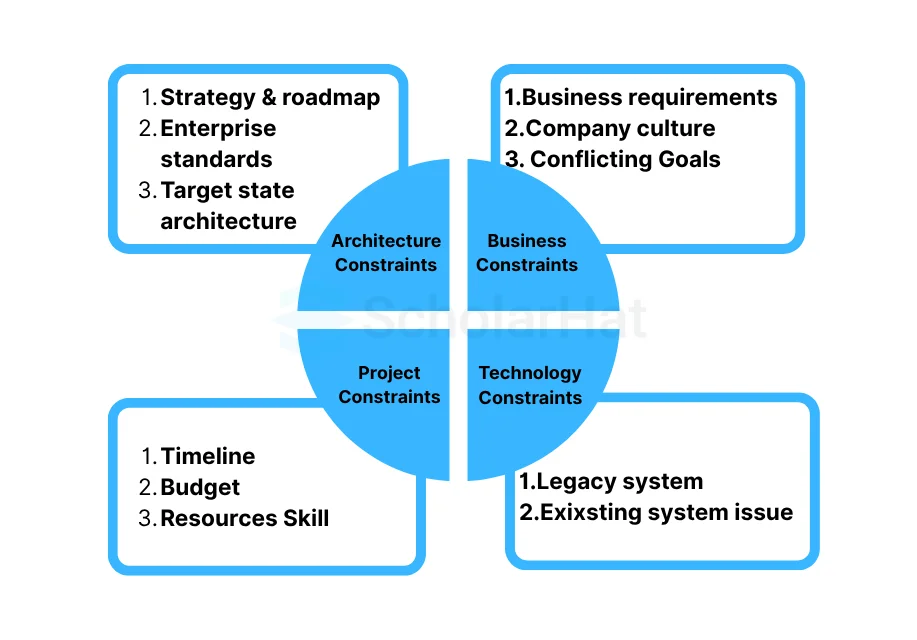
Specialization Areas for .Net Solution Architects

1.) .NET
A.NET Solution Architect creates and manages the execution of scalable software solutions on the.NET platform, ensuring adherence to architectural best practices and using knowledge in C#, ASP.NET, Entity Framework, and associated technologies for high-performance applications.
.NET Solution Architect Roadmap Key Concept
1.) Programming Languages
- C#: Learn syntax, object-oriented programming (OOP), design patterns, and best practices. Develop your technical expertise by becoming fluent in C#.
- F#: Learn about functional programming principles and how F# complements C# in the.NET ecosystem. Understanding both languages broadens problem-solving possibilities.
- VB.NET: While familiarity is useful, it is not required for most modern projects. Focus on C# and F# as core languages, however, basic VB.NET expertise may be useful for legacy systems.
2.) Frameworks
- ASP.NET MVC/Core: Develop web apps using the Model-View-Controller architecture. Expertise in routing, controllers, views, and data access is essential.
- ASP.NET Web API: Improve your grasp of implementing RESTful APIs with Web API. This provides for smooth data sharing and communication among applications.
- WPF: Focus on creating rich and visually appealing desktop apps for Windows users. WPF experience is useful for specific user interfaces.
- WinForms: While WinForms is generally used for legacy projects or small apps, you can learn how to utilize it to comprehend current systems or do smaller development jobs.
3.) Data Access
- Entity Framework: Learn how to use Entity Framework to access and manipulate data efficiently across several databases. This is an essential ability for handling data in your apps.
- NoSQL Databases: Learn about NoSQL databases like MongoDB or Cassandra. While not often employed, they provide distinct advantages for specific use cases and data structures.
4.) Library & Design
- .NET Core Libraries: Learn about core libraries such as HttpClient, Logging, and Config. These built-in libraries provide critical functionality for your applications.
- Third-Party Libraries: Be wary of popular third-party libraries that extend .NET functionality. Use them intelligently to meet unique needs and improve your offerings.
- SOLID Principles: Use the SOLID principles (Single Responsibility, Open/Closed, Liskov Substitution, Interface Segregation, Dependency Inversion) to create maintainable, scalable, and testable software.
- Microservices Architecture: Understanding and implementing microservice-based architectures when suitable. This method divides huge applications into smaller, independent services, increasing agility and resilience.
- API Design Principles: Understand RESTful API design principles and best practices. Create APIs that are secure, efficient, and easy to use while communicating with other apps.
5.) Cloud and Deployment
- Microsoft Azure: Learn about Azure services such as App Service, Azure Functions, and Cosmos DB for deploying applications in the cloud. Cloud infrastructure provides scalability and flexibility.
- CI/CD pipelines: Learn about continuous integration and delivery (CI/CD) using solutions like Azure DevOps. Automate the build, testing, and deployment processes to ensure streamlined and effective development.
Frontend
A Frontend Solution Architect is a specialist who creates and oversees the client-side architecture of software applications. They concentrate on the user interface (UI) and user experience (UX) components, selecting and integrating frontend technologies while assuring compliance with overarching architectural principles and best practices.
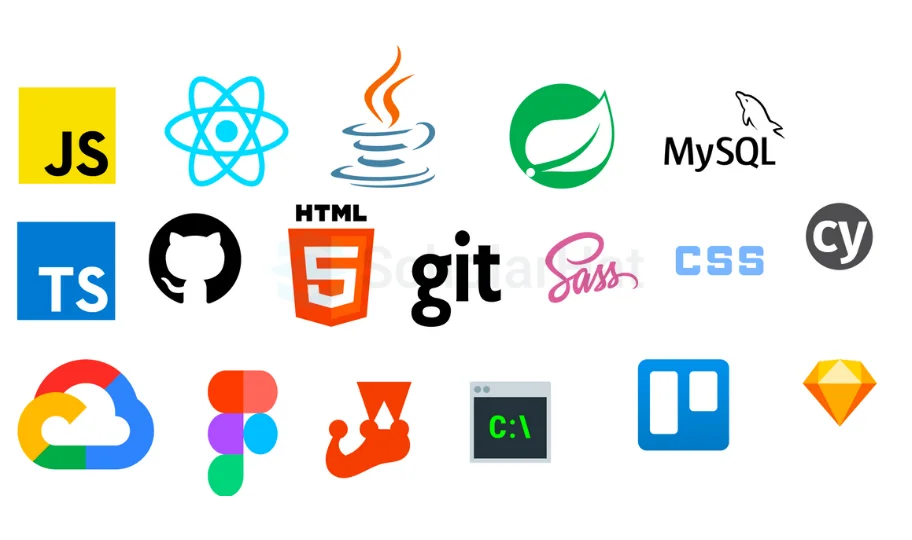
Frontend Solution Architect Roadmap Key Concept
1.) Web technologies
- HTML5 and CSS3: Understand the principles of creating web page structure and styling. Understand sophisticated features such as semantic markup, accessibility, and preprocessors (SASS and LESS).
- JavaScript: Be able to write clean, manageable, and efficient JavaScript code. Improve your understanding of object-oriented programming, closures, asynchronous programming, and the most recent ES features.
- JavaScript frameworks: Choose and specialize in at least one major framework (React, Angular, or Vue) for developing complicated user interfaces. Understand their fundamental principles, design patterns, and best practices. Investigate alternative popular frameworks for special requirements.
- React: Understand the component-based architecture, state management (Redux, MobX), and routing (React Router). Understand unidirectional data flow, JSX syntax, and the virtual DOM.
- Angular: Improve the comprehension of the component-based framework, template syntax, dependency injection, and services. Learn RxJS for reactive programming and routing (Angular Router).
- UI/UX Design Principles: Develop a good understanding of user experience and interface design. Learn about user-centered design, information architecture, interface design, usability testing, and accessibility standards.
- Responsive Design: Learn how to create interfaces that adjust fluidly across multiple screen sizes and devices. Understand mobile-first development, media queries, and responsive frameworks.
2.) Performance and Optimisation:
- Web Performance Optimisation: Learn how to optimize the performance of websites and applications. Discover techniques including code minification, image optimization, caching, and lazy loading.
- Accessibility: Make sure your interfaces are useful for everyone, regardless of ability. Follow the WCAG requirements and gain an understanding of assistive technologies.
- Testing and Debugging: Become proficient in front-end testing, including unit testing, integration testing, and user testing. Use debugging tools to properly detect and resolve issues.
Database
A Database Solution Architect is a specialist who designs and oversees the installation of database systems within software solutions. They specialize in data storage structure, query performance optimization, and data integrity, all while aligning database architecture with overall system requirements and best practices.
Database Solution Architect Roadmap Key Concept
1.) Database Technologies:
- Relational Databases: Learn the principles of relational databases, including data modeling (ER diagrams), normalization, SQL query language, and performance optimization strategies. Be conversant with popular relational databases such as MySQL, PostgreSQL, and Microsoft SQLServer.
- NoSQL Databases: Learn about NoSQL databases (such as MongoDB and Cassandra) and how they may be used for various data models and scaling demands. Learn the query languages (such as NoSQL and Cypher) that are specific to each technology.
- In-memory Databases: Understand the advantages and applications of in-memory databases (such as Redis and Memcached) for high-performance requirements. Investigate their integration with different database technologies.
- Cloud-based databases: Master database deployment and management in cloud systems (for example, AWS RDS and Azure Cosmos DB). Learn about cloud-specific features and benefits for scalability and disaster recovery.
2.) Data Management and Administration:
- SQL Query Optimization: Learn how to write efficient and optimized SQL queries that obtain data rapidly while using as few resources as possible. Understand indexing strategies and query planning.
- Database Administration: Learn how to manage users, backup data, configure security, and monitor performance. Familiarise yourself with the administrative tools for each database technology.
- Data Modelling: Learn a variety of data modeling approaches (e.g., dimensional, entity-relationship) to create efficient and scalable data structures that fulfill business requirements.
- Performance tuning: Learn how to detect and address database performance issues. Use tools and techniques for profiling, analysis, and optimization.
3.) Security and Compliance:
- Data Security: To secure sensitive information, understand and apply data security best practices (such as encryption, access control, and intrusion detection). Be familiar with common vulnerabilities and mitigation solutions.
- Compliance: Learn about data privacy and compliance regulations (such as GDPR and HIPAA) and how to construct databases that meet them.
4.) Additional skills:
- Cloud and DevOps: Learn about cloud installations and how they integrate with CI/CD pipelines to automate database provisioning and administration.
- Big Data and Data Analytics: Understand the fundamentals of big data technologies and how they interact with databases to enable large-scale data analysis.
Cloud Platforms
Cloud platforms for solution architects are the infrastructure and services offered by cloud service providers for designing, deploying, and 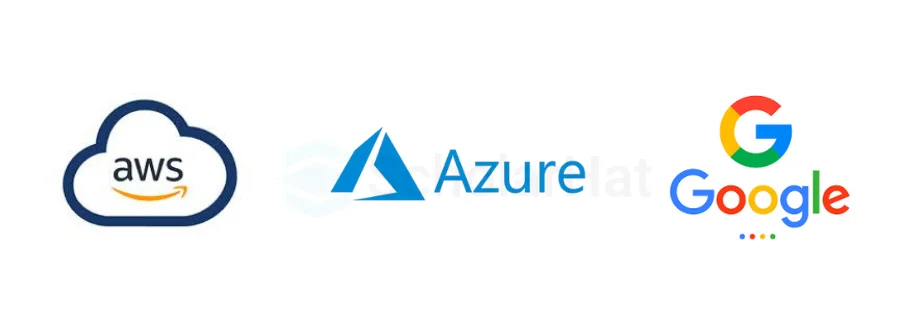
Cloud Platforms for Solution Architect Roadmap Key Concept
1.) Cloud Platforms
- Public Clouds: Master the AWS, Azure, and GCP platforms, covering core services (compute, storage, networking, databases) and deployment models (IaaS, PaaS, SaaS). Learn about their strengths, shortcomings, pricing models, and use cases.
- Private Clouds: Learn about private cloud solutions (such as OpenStack and VMware Cloud Foundation) and deployment options (on-premises or managed). Understand their benefits for certain security and control requirements.
- Hybrid Clouds: Learn about hybrid cloud architectures, which combine public and private clouds to provide flexible and scalable solutions. Understand the integration obstacles and best practices.
2.) Cloud services:
- Compute: Learn how to properly provision and manage virtual machines, containers, and serverless operations across many cloud platforms. Learn about scalability tactics and cost optimization techniques.
- Storage: Learn about the platforms' block storage, object storage, and file storage capabilities. Select the appropriate storage solution based on data type, access patterns, and performance requirements.
- Networking: Learn about cloud networking concepts (virtual networks, subnets, and security groups) and how they differ between platforms. Set up secure and scalable network infrastructures.
- Databases: Learn about each platform's managed database services (for example, AWS RDS, Azure SQL Database, and GCP Cloud SQL). Understand their capabilities and advantages for various workloads.
- Other Services: Learn about the extra services provided by each platform (such as AI/ML, analytics, and IoT) that can help you improve your solutions.
3.) Cloud Architecture and Design:
- Cloud Security: Use strong security measures in cloud environments, such as access restriction, encryption, and data protection. Understand the compliance standards and best practices.
- Cloud Cost Management: Create strategies for optimizing cloud expenses by exploiting pricing models, reserved instances, and cost-saving solutions provided by each platform.
- High Availability and Disaster Recovery: Create cloud architectures that can withstand failures and disturbances. Implement disaster recovery plans and use suitable backup and recovery providers.
- CI/CD pipelines: Implement continuous integration and delivery (CI/CD) in your cloud deployments. Understand DevOps principles and technologies for automating infrastructure and application provisioning.
API Design & Integration
API Design and Integration for Solution Architects entails developing well-defined and efficient Application Programming Interfaces (APIs) and smoothly integrating them into software systems.
API Design & Integration for Solution Architect Roadmap Key Concept
1.) API design
- RESTful API Principles: Understand the RESTful API design principles (HATEOAS, resource identification, statelessness, and so on) and best practices for designing well-structured, predictable, and user-friendly APIs.
- API Modelling: Learn how to use various API modeling tools and approaches (Swagger, RAML, Postman) to successfully document and develop APIs.
- Data formats: Be familiar with standard API data formats, such as JSON and XML, and understand their strengths, shortcomings, and use cases.
- Authentication and Authorization: Use strong authentication and authorization technologies (OAuth, JWT, API keys) to secure your APIs and control data access.
- Scalability and Performance: Create APIs that are scalable, performant, and capable of handling large amounts of traffic. Understand API gateways, caching algorithms, and load-balancing methods.
2.) API Integration:
- Integration Technologies: Learn about various integration methods for connecting systems, such as message queues (RabbitMQ, Kafka), APIs (RESTful, SOAP), and event-driven designs.
- Microservices Architecture: Learn and implement microservices ideas to break down huge applications into smaller, autonomous services that communicate via APIs.
- API Mocking Tools: Use API mocking tools (such as Postman and Mockoon) to replicate API behavior during development and testing, allowing for faster iteration and more independent development.
- Middleware: Understand how to employ middleware (API gateways and service meshes) to manage and improve API traffic, including routing, security, and monitoring.
- Data Transformation and Translation: Understand how to transform and translate data between multiple formats and systems to guarantee smooth integration.
Design Patterns and Practices
Design patterns are tried-and-true, reusable solutions to common software design issues, providing templates that increase efficiency and effectiveness. They increase code readability, maintainability, & scalability by encouraging standard approaches to specific software development difficulties.
Design Patterns and Practices for Solution Architect Roadmap Key Concept
1.) Software Design Patterns:
- Creational Patterns: Learn about common creational patterns (e.g., Singleton, Factory Method, Abstract Factory) and their applications for object instantiation and complexity management.
- Structural patterns: Understand and use structural patterns (such as Adapters, decorators, and Facades) to organize code, increase flexibility, and simplify interactions between classes and components.
- Behavioral patterns: Be adept in using behavioral patterns (e.g., Observer, Strategy, Template Method) to establish communication and collaboration mechanisms amongst objects, as well as encapsulating various algorithms and behaviors.
2.) Development Techniques:
- SOLID Principles: Use the SOLID principles (Single Responsibility, Open/Closed, Liskov Substitution, Interface Segregation, Dependency Inversion) to create maintainable, scalable, and testable software.
- DRY (Don't Repeat Yourself): Reduce code duplication and redundancy by following DRY principles, utilizing abstractions, and efficiently leveraging inheritance and composition.
- Clean Code: Create code that is clean, readable, and well-structured, using known best practices for clarity, maintainability, and testing.
Architectural Patterns
An Architectural Solution Architect is a professional who designs and supervises the overall architecture of sophisticated software solutions. They concentrate on high-level system structures, assuring alignment with business objectives, scalability, & compliance with architectural principles & best practices.
Architectural Patterns for Solution Architect Roadmap Key Concept
1.) Architectural patterns
- MVC (Model-View-Controller): Learn the foundations of MVC to divide your application into separate levels for presentation, data, and business logic. Understand the advantages, disadvantages, and variations (MVVM, MVP).
- Microservices: Learn more about the microservices design, which breaks down huge programs into smaller, independent services that communicate over APIs. Understand its advantages in terms of scalability, agility, and fault tolerance, as well as the issues associated with complexity and distributed systems administration.
- Event-Driven Architecture: Discover how events are used to initiate actions and organize communication across system components. Understand the benefits of loosely linked systems and real-time data processing, as well as the requirement for robust event delivery mechanisms and monitoring.
- Serverless Architecture: Learn about serverless architecture, in which cloud providers manage server infrastructure while you focus on code execution. Understand the benefits of cost-effectiveness and scalability, as well as the constraints of fine-grained control and vendor lock-in.
2.) Pattern Selection and Trade-Offs:
- Analyse project requirements: Understand each project's individual needs, such as user base, data quantity, performance demands, and future expansion requirements.
- Evaluate pattern suitability: Match architectural patterns with project requirements, taking into account each pattern's strengths, limitations, and trade-offs. For example, microservices may be good for large, highly scalable applications, whereas MVC may be appropriate for basic web apps.
- Anticipate the consequences: Think beyond the immediate rewards and consider the potential obstacles and long-term consequences of your selected patterns. Consider complexity, maintainability, security, and cost consequences.
Docker and Kubernetes
Uses containerization technology (Docker) and container orchestration tools (Kubernetes) to efficiently create, deploy, and manage sophisticated, distributed applications. Understands how to create container images, manage configurations, and follow best practices for secure and scalable deployment.
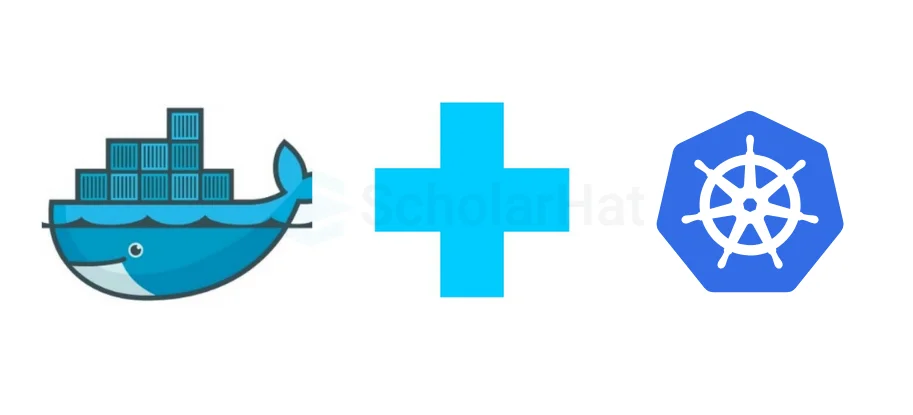
Docker & Kubernetes for Solution Architect Roadmap Key Concept
1.) Docker
- Container Fundamentals: Learn the fundamentals of containerization, including the differences between virtual machines (VMs) and containers, as well as the benefits and constraints.
- Docker CLI: Be comfortable using the Docker command-line interface to create, run, manage, and share container images.
- Dockerfile Creation: Learn how to efficiently construct Dockerfiles that specify your application's environment, dependencies, and instructions within the container.
- Multi-stage Builds: Understand and apply multi-stage builds to improve image size and security.
- Volume Management: Learn how to handle persistent data in containers with volumes and bind mounts.
- Networking: Set up port mapping, service discovery, and overlay networks for containers.
2.) Kubernetes
- Kubernetes Architecture: Understand the fundamental components of Kubernetes (pods, deployments, services, ingress, etc.) and how they interact to manage containerized applications.
- Kubernetes YAML: Create YAML manifests to define deployments, services, and other Kubernetes resources efficiently.
- Deployment and Management: Understand how to install and manage containerized apps on Kubernetes clusters, including scalability, rolling updates, and health checks.
- Security: Implement Kubernetes security best practices, such as pod security policies, network policies, and role-based access control (RBAC).
- Troubleshooting and monitoring: Effectively identify and handle typical Kubernetes issues with logs, metrics, and debugging tools.
- CI/CD Integration: Use Kubernetes to automate deployments and ensure continuous delivery.
DevOps: Git, Azure DevOps
DevOps combines development and operations to automate the software development lifecycle. Git, a distributed version control system, enables more efficient source code management. Azure DevOps is a Microsoft platform that includes extensive tools for source control, continuous integration, deployment, and collaboration, allowing teams to develop software quickly and reliably.
DevOps: Git, Azure DevOps for Solution Architect Roadmap Key Concept
1.) Git
- Version Control Fundamentals: Learn the fundamentals of version control, including branching, merging, and collaboration with Git.
- Command-Line Mastery: Be able to use Git commands efficiently for both fundamental and sophisticated activities such as committing, branching, staging, and conflict resolution.
- Workflow and Best Practices: Understand Git branching mechanisms (e.g., Gitflow, feature branching), and commit to cleanliness, and collaborative procedures to ensure effective development.
- Remote repositories: Work with remote repositories on sites such as GitHub or Azure Repos, taking advantage of capabilities like pull requests, code reviews, and issue tracking.
2.) Azure DevOps
- Platform Fundamentals: Understand the essential components and features of Azure DevOps, such as Boards, Pipelines, Repos, Artefacts, and Test Plans.
- Agile and DevOps Practices: Understand and apply Agile approaches (Scrum, Kanban) in Azure DevOps for project management and backlog prioritization.
- CI/CD Pipelines: Using Azure Pipelines, you can create and configure continuous integration (CI) and continuous delivery pipelines. Automate build, testing, and deployment processes to ensure smooth development cycles.
- Release Management: Use Azure DevOps to define environments, create release strategies, and automate deployments at various stages.
- Automation and scripting: Use scripting languages (such as PowerShell and YAML) to automate processes within Azure DevOps pipelines, increasing efficiency and consistency.
Building Real-World Projects
- ERP Implementation: Design and deploy an ERP system that is adapted to the company's specific needs, taking into account modules like finance, human resources, and supply chain.
- Cloud Migration Strategies: Create a comprehensive plan for transitioning an organization's on-premise infrastructure to a cloud environment while assuring scalability, security, and cost efficiency.
- E-Commerce Platform Development: Create a strong e-commerce platform that addresses issues such as high traffic, secure payment gateways, and a smooth user experience.
- IoT Solutions for Smart Cities: Create an Internet of Things (IoT) solution for a smart city by combining sensors, data analytics, and communication protocols to improve urban services such as transportation and trash management.
- Health Information System: Create an integrated healthcare information system that ensures interoperability across diverse medical apps, electronic health records (EHR), and adherence to healthcare legislation.
Summary
The Solution Architect Roadmap enables professionals to create and deliver impactful technological solutions. It teaches them skills including system analysis, software design, and project management. Architects become invaluable assets by traversing specializations, mastering technologies, and completing real-world projects, directing organizations toward innovative, scalable, and secure IT landscapes.
Take our Net skill challenge to evaluate yourself!

In less than 5 minutes, with our skill challenge, you can identify your knowledge gaps and strengths in a given skill.

